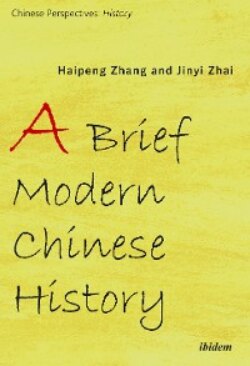Читать книгу A Brief Modern Chinese History - Haipeng Zhang - Страница 11
Tsarist Russia: A Grabber of Chinese Lands
ОглавлениеRussia intensified its efforts to grab land in the northeast and northwest of China after the First Opium War. In September, 1847, the Tsar appointed a general and diplomat as Governor General of East Siberia. The governor’s main duty was to seize China’s Heilong River. Two years later, the Russian navy invaded the river’s estuary and Kuyedao (Sakhalin). By 1853, Russia had expanded into the lower reaches of the Heilong River. At the beginning of 1854, the Tsar approved the Governor General’s decision to arm navigation along the Heilong River. In May, seventy Russian warships and 1,000 Russian soldiers crossed the Sino-Russian border and began to build garrisons in the lower reaches of the Heilong River. The next year, Tsarist Russia even started to transport armed settlers into the territory. In late 1856, the Tsar set up a new oblast (province) on the Heilong River’s lower reaches and Kuyedao.
In May, 1858, when China was facing Anglo-French aggression, the governor of East Siberia forced the Qing general supervising Aihui (present-day Heihe, Heilongjiang) to sign the Treaty of Aihui (Aigun). Under this treaty, Russia grabbed more than 600,000 square kilometers of Chinese territory north of the Heilong River and south of the Stanovoy Range. However, the Qing government disapproved of this treaty and punished the general of Aihui. Russia, however, took Hailanpao, the Chinese city on the north side of Heilongjiang, renamed it Blagoveshchensk and awarded the governor of East Siberia a noble title. Russia continued their expansion into the northwest China and the Tsar’s troops invaded the region east of Balkhash Lake as early as 1846. Then, in the 1850s, Russia crossed the Ili River and seized a huge piece of Chinese territory.
After the signing of the Treaty of Beijing, which involved China, Britain and France, Russia threatened a huge attack against China while also promising to help Qing crack down on the Taiping Rebellion.13 Due to the circumstances, in November, 1860, the Sino-Russian Beijing Treaty was signed under pressure from the Russian Empire. As a consequence, 400,000 square kilometers of Chinese territory east of the Wusuli River was ceded to Russia. In regards to the western Sino-Russian border, this treaty imposed a Russia-drawn border on China. Starting in 1862, China and Russia started to negotiate about the northwestern border. Russians arbitrarily changed China’s original western border to Balkhash Lake. By doing so, huge pieces of Chinese territory could be stolen by Russia. In order to achieve its goal, Russia threatened to attack Kashiga’er (Kashgar) and Yili (Ili). Negotiations resumed in 1864 and Russia stationed its troops outside Tacheng (Tarbagatai), where both sides met. In October, Qing was forced to sign the Treaty of Tarbagatai (勘分西北界约记). China, again, lost another 440,000 square kilometers of land east and south of Balkhash Lake to Russia. In any review of the Second Opium War, it must be recognized that Tsarist Russia grabbed the lion’s share of land, more than 1,440,000 square kilometers of Chinese territory.
